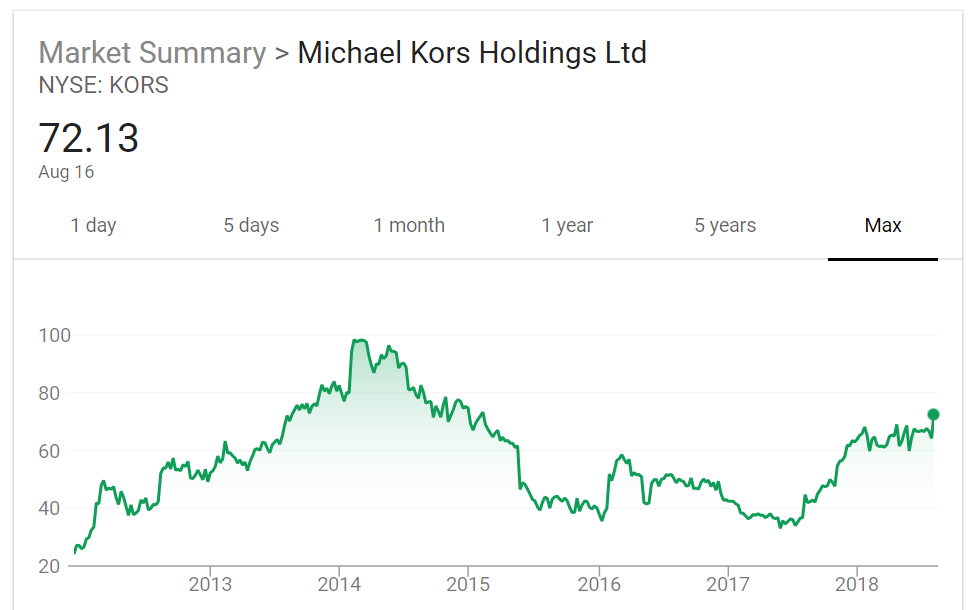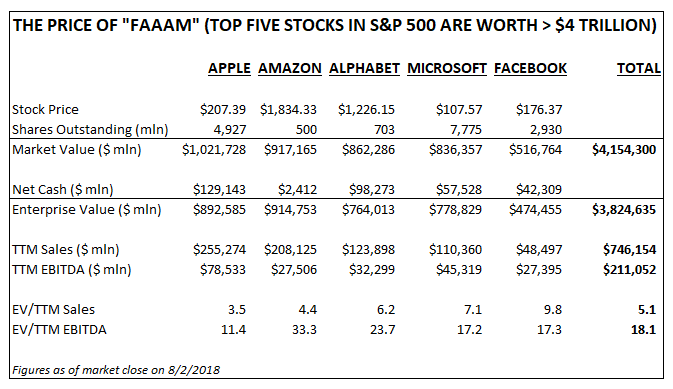In the spirit of fashion, let me begin this article off with a runway of sorts, even if it is a lineup of stock charts rather than models.
Here is a chart of Michael Kors (KORS) stock since its late 2011 IPO. Notice the move from $20 to $100 by early 2014:
Here is Coach stock -- now called Tapestry (TPR)-- since its IPO in 2000. In this case there were two separate astronomical run-ups, neither of which could be maintained.
Abercrombie and Fitch (ANF) was scorching hot when I was in high school in the late 1990s:
And one more: UnderArmour (UAA):
There are many things these companies have in common, and not all bad actually. For instance, notice how all of these brands have survived and built sustainable multi billion dollar businesses?
But on the flip side, the stocks have been duds over long periods of time. While they have been volatile (making for plenty of trading opportunities in both directions), the reason why none of them have been good long-term buy and hold candidates is because fairly early on in their stints as public companies the brands were so popular that the stocks became massively overvalued. So even though the businesses continued to grow, the stocks turned out to be poor investments.
It has been a little while since we have seen a surging fashion brand on Wall Street (UnderArmour likely the most recent), but recent IPO Canada Goose fits the mold. Here is the chart since the 2017 IPO:
GOOS currently is valued at $6 billion USD, versus expected 2018 revenue of $420 million, for an enterprise to sales ratio of ~15x. Even with 20% growth in 2019, to $500 million (the current Wall Street analyst consensus estimate), the multiple is ~12x.
Consider what types of enterprise value-to-revenue multiples the large fashion brands currently trade for:
Tapestry 2.5x
Michael Kors 2.3x
Ralph Lauren 1.5x
Tiffany 3.9x
Nike 3.5x
UnderArmour 1.8x
There is simply no way to justify such a sky high revenue multiple for GOOS. The median revenue multiple from the group of 5 comparables above is 2.5x. So how much does GOOS need to grow over the next decade to simply justify the current stock price? The numbers come out to an 18% compounded annual growth rate from 2018 through 2028, which gets the company to roughly $2.2 billion of annual revenue:
$420M * 1.18^10 = ~$2.2 billion
Put another way, if the business grows from $420 million this year to $2.2 billion in 10 years, and the shares trade at 2.5x EV/revenue at that point in time, the stock price will go nowhere even though sales would have grown by 424%!
The only way these numbers don't work is if GOOS has somehow figured out a way to sell clothes for far higher profit margins than the leading fashion companies in the world, which have already amassed multi-billion dollar businesses. Betting on that outcome seems ridiculous to me.
As a result, although it can be tempting to jump on highflying recent IPOs like GOOS, thinking it could be the next big thing in fashion, it is important to realize how lofty the valuations can be. And if stock prices reflect plenty of growth already in future years, the share price will not have to follow suit.
One last example, outside of the fashion space -- remember how bonkers investors went for the Shake Shack IPO back in January 2015? Take a look at how the shares have done since hitting $96 in May 2015:
And that is despite SHAK's revenue surging 137% from $190 million in 2015 to an expected $450 million in 2018.
GOOS buyers beware.















